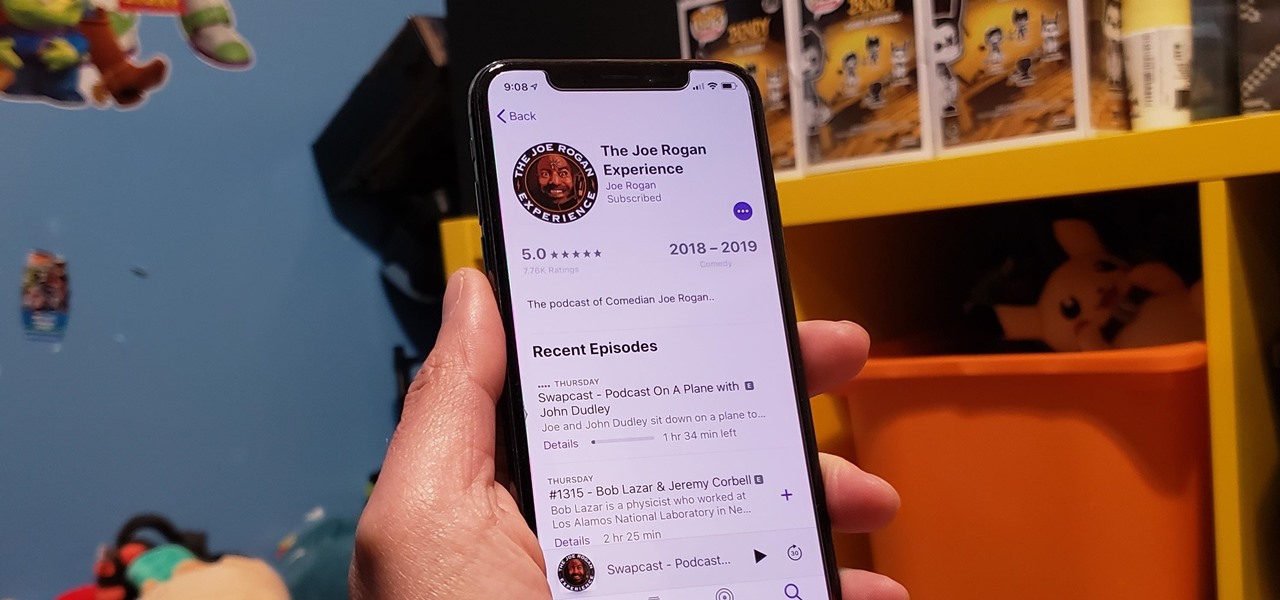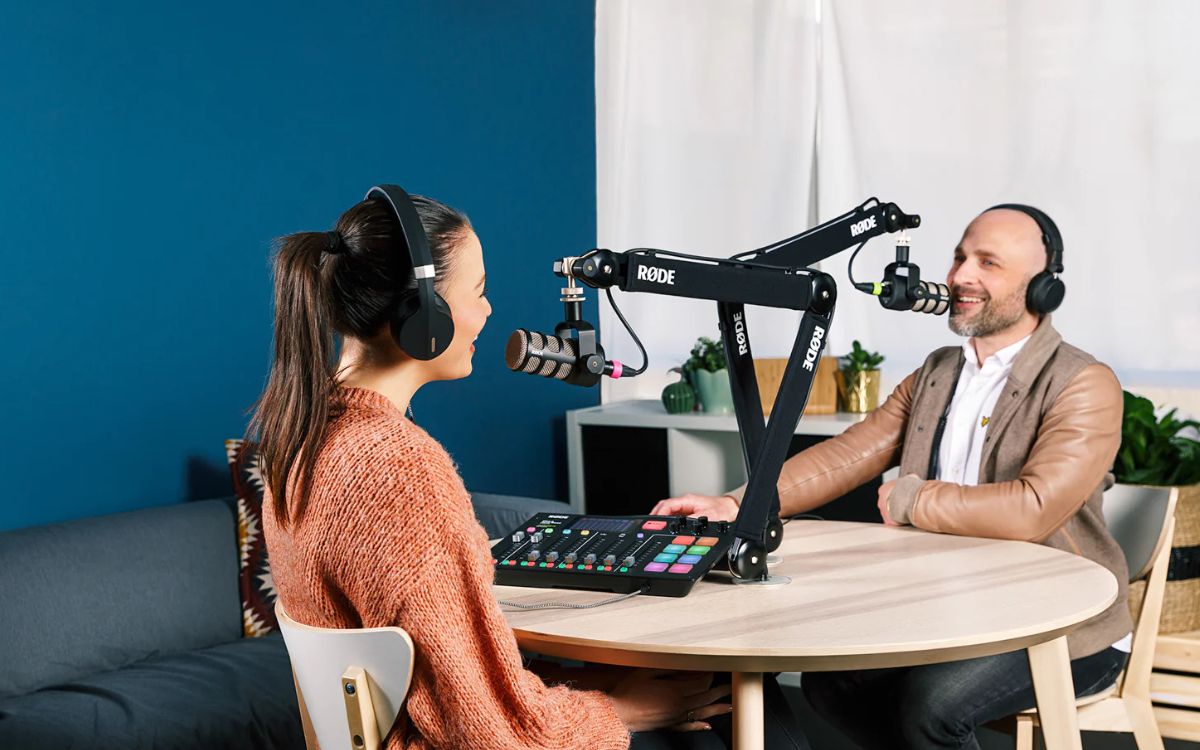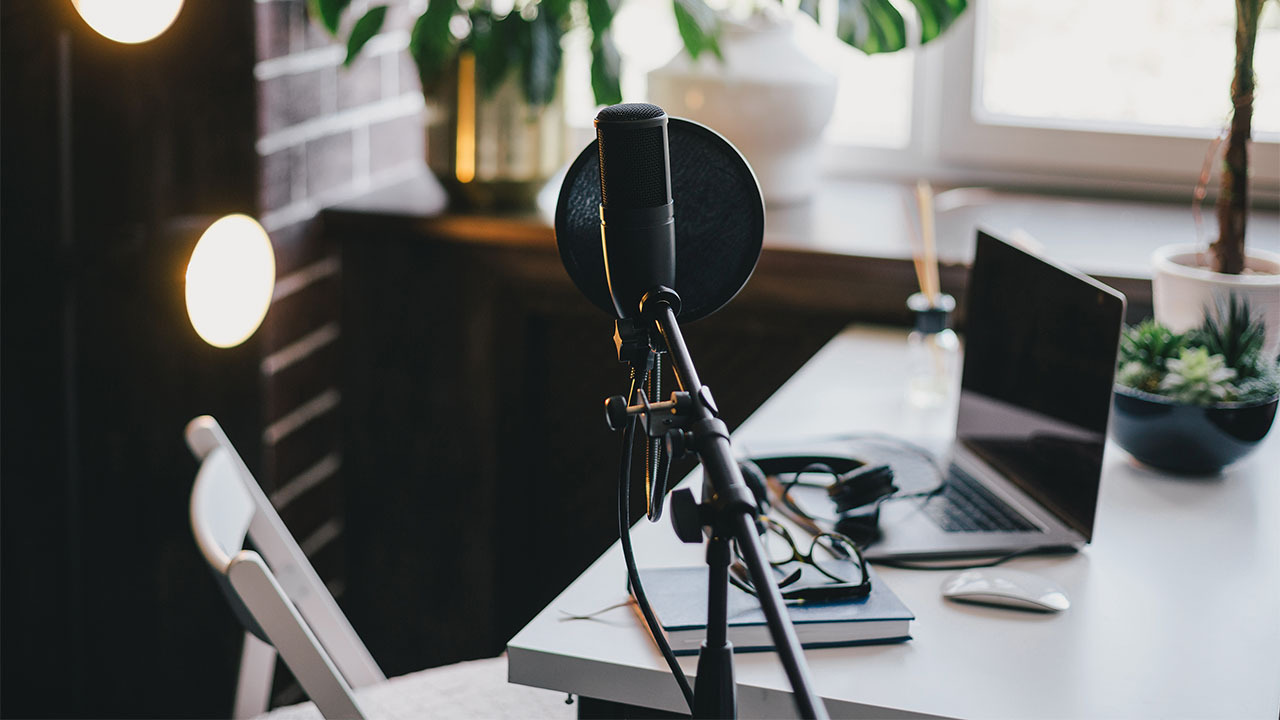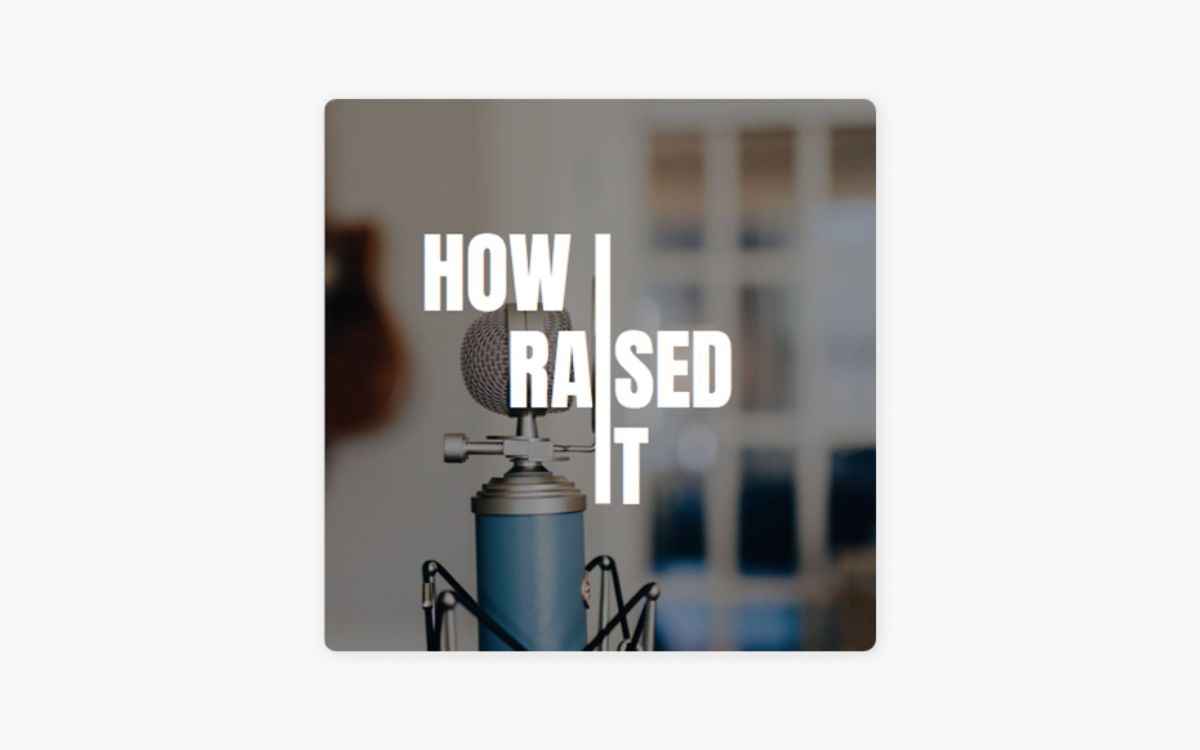Home>Events & Info>Podcast>How Do I Setup A Podcast


Podcast
How Do I Setup A Podcast
Modified: January 22, 2024
Learn how to set up a podcast and share your voice with the world. Step-by-step guide for beginners on creating and launching your own podcast.
(Many of the links in this article redirect to a specific reviewed product. Your purchase of these products through affiliate links helps to generate commission for AudioLover.com, at no extra cost. Learn more)
Table of Contents
- Introduction
- Step 1: Choosing the Right Podcasting Format
- Step 2: Selecting a Podcasting Platform
- Step 3: Acquiring the Necessary Equipment
- Step 4: Planning Your Podcast Episodes
- Step 5: Recording and Editing Your Podcast
- Step 6: Creating Podcast Graphics and Intro/Outro Music
- Step 7: Hosting and Publishing Your Podcast
- Step 8: Launching and Promoting Your Podcast
- Conclusion
Introduction
Welcome to the exciting world of podcasting! If you’ve been thinking about starting your own podcast but don’t know where to begin, you’ve come to the right place. In this comprehensive guide, we will walk you through the step-by-step process of setting up a successful podcast.
Podcasting has become increasingly popular in recent years, with millions of people around the world tuning in to their favorite shows on a regular basis. Whether you want to share your expertise, entertain, or connect with a specific audience, podcasting offers a unique and powerful platform to do so.
But setting up a podcast can seem overwhelming, especially if you’re new to the medium. Don’t worry – we’ve got you covered. By following the steps outlined in this guide, you’ll be well on your way to creating and launching a podcast that stands out from the crowd.
Before we dive into the details, it’s important to note that podcasting requires a combination of technical know-how, creativity, and consistency. While it may seem daunting at first, the rewards of producing your own podcast can be immense. Not only can it be a fun and rewarding hobby, but it can also lead to new connections, opportunities, and even potential monetization.
Are you ready to embark on this podcasting journey? Great! Let’s get started by discussing the first crucial step: choosing the right podcasting format.
Step 1: Choosing the Right Podcasting Format
The first step in setting up a podcast is to decide on the format that best suits your content and audience. The format of your podcast will determine how you structure your episodes and engage with your listeners. Here are a few popular podcasting formats to consider:
- Interview Style: This format involves interviewing guests, experts, or interesting individuals in your niche. It allows for dynamic conversations and diverse perspectives, making it engaging for both you and your audience.
- Solo Show: In this format, you host the show by yourself, sharing your thoughts, experiences, and expertise with your listeners. It’s a great option if you prefer to have full control over the content and enjoy a more intimate connection with your audience.
- Co-Hosted Show: Partnering with a co-host can add a unique dynamic to your podcast. It allows for natural banter, different viewpoints, and shared responsibilities. Choose someone who complements your style and enhances the overall chemistry of the show.
- Narrative or Storytelling: This format revolves around telling compelling stories, whether real-life narratives, fictional tales, or in-depth reporting. It requires careful planning and an engaging storytelling style to captivate your audience throughout each episode.
- Panel Discussion: Similar to an interview format, panel discussions involve a group of individuals discussing a specific topic or theme. It offers a lively and diverse conversation, ensuring multiple viewpoints and a variety of perspectives for your listeners.
- Hybrid Format: Feel free to mix and match different formats to create a unique style that suits your content and audience. You can combine interviews with solo episodes, include panel discussions in a narrative format, or experiment with other creative combinations.
Consider your content, audience preferences, and your own strengths and interests when deciding on the format. It’s essential to choose a format that you feel comfortable with and that aligns with the goals of your podcast.
Once you have determined the podcasting format, you can move on to the next step: selecting a podcasting platform.
Step 2: Selecting a Podcasting Platform
Now that you have decided on the format for your podcast, it’s time to select a podcasting platform to host and distribute your episodes. A podcasting platform acts as a central hub where you upload your episodes and manage your podcast feed. Here are a few popular podcasting platforms to consider:
- Anchor: Anchor is a free podcasting platform that provides an all-in-one solution for hosting, distributing, and monetizing your podcast. It offers user-friendly features such as episode editing, automatic distribution to various podcast directories, and the ability to monetize through sponsorships and listener donations.
- Libsyn: Libsyn is one of the oldest and most reputable podcast hosting platforms. It offers reliable hosting, advanced analytics, customizable podcast websites, and distribution to all major podcast directories.
- Buzzsprout: Buzzsprout is a user-friendly podcast hosting platform that provides easy-to-use tools for uploading and scheduling your episodes. It offers detailed analytics, automatic distribution, and a beginner-friendly interface.
- Podbean: Podbean is a feature-rich podcast hosting platform that offers unlimited storage, integrated distribution, monetization options, and a built-in website for your podcast.
- Spreaker: Spreaker is a comprehensive podcast hosting platform that offers live podcasting, monetization, analytics, and distribution to major podcast directories.
When selecting a podcasting platform, consider factors such as ease of use, pricing plans, analytics, distribution capabilities, and any additional features that align with your podcasting needs and goals. It’s also important to ensure that the platform provides sufficient bandwidth and storage for your episodes.
Remember, you can always switch podcasting platforms in the future if you decide to change or upgrade your hosting needs. Many platforms offer easy migration options, making the transition seamless.
Once you have chosen a podcasting platform and set up your account, you’re ready to move on to the next step: acquiring the necessary equipment.
Step 3: Acquiring the Necessary Equipment
As you embark on your podcasting journey, it’s important to have the right equipment to ensure high-quality audio and a professional sound. While you don’t need to invest in expensive gear right away, having the essentials can make a significant difference in the overall production value of your podcast. Here’s a breakdown of the necessary equipment:
- Microphone: A good-quality microphone is essential for capturing clear and crisp audio. USB microphones, such as the Blue Yeti or Audio-Technica ATR2100x, are popular options for beginners as they offer excellent sound quality and are easy to set up.
- Headphones: Invest in a pair of closed-back headphones to monitor your audio while recording and editing. They help you catch any background noise or audio issues and ensure a more accurate representation of your podcast’s sound.
- Pop Filter: A pop filter is a screen that attaches to your microphone to reduce plosive sounds caused by the pronunciation of certain letters, such as “P” and “B.” It helps eliminate unwanted popping sounds and improves the clarity of your recordings.
- Boom Arm or Microphone Stand: A boom arm or microphone stand holds your microphone in place and allows for flexible positioning. It helps reduce handling noise and creates a more stable recording setup.
- Acoustic Treatment: While not essential, adding some basic acoustic treatment to your recording space can significantly improve sound quality. This can include foam panels, bass traps, and diffusers to minimize echo and background noise.
- Recording Software: Choose a recording software or Digital Audio Workstation (DAW) that suits your needs. Popular options include Audacity (free), Adobe Audition, GarageBand (for Mac users), or Reaper. These software programs allow you to record, edit, and mix your podcast episodes.
Remember, your recording environment plays a crucial role in the overall quality of your podcast. Find a quiet space with minimal background noise and consider using furniture, blankets, or foam panels to absorb echo and reduce reverberation.
As you gain experience and grow your podcast, you can consider investing in additional equipment, such as audio interfaces, mixers, and professional-grade microphones to further enhance your audio quality. But for beginners, the equipment mentioned above will suffice to get you started.
Now that you have acquired the necessary equipment, it’s time to plan your podcast episodes in step 4.
Step 4: Planning Your Podcast Episodes
Planning your podcast episodes is a crucial step in ensuring a smooth and organized production process. By taking the time to plan out your content, you’ll have a clear roadmap for each episode and maintain consistency in delivering valuable and engaging content to your audience. Here’s how you can effectively plan your podcast episodes:
- Define Your Podcast’s Theme and Topics: Determine the overarching theme of your podcast and brainstorm potential topics that align with your target audience’s interests. Consider what unique perspectives or expertise you can bring to these topics to differentiate your podcast from others in your niche.
- Create an Episode Outline: For each episode, create a detailed outline that includes key points, subtopics, and any important information you want to cover. This will serve as your guide during recording and help you stay focused and organized.
- Prepare Questions (for Interview Format): If your podcast involves interviews, prepare a list of thoughtful and engaging questions for your guests. Research their background and work to ask meaningful questions that will spark interesting conversations.
- Consider Episode Length: Determine the ideal length for your episodes, keeping in mind the attention span of your target audience and the depth of the topic. Aim for a duration that allows you to deliver valuable content without losing listener interest.
- Include Segments or Regular Features: To add variety and structure to your episodes, consider incorporating recurring segments or features. This could include listener Q&A, expert tips, or a “hot topic” discussion related to your podcast’s theme.
- Guest Booking (if applicable): If you plan to have guests on your podcast, reach out to potential guests and secure their participation in advance. Provide them with episode details, guidelines, and any necessary information to ensure a smooth interview process.
By planning your podcast episodes in advance, you’ll save time, reduce the chances of awkward pauses or rambling, and deliver a more polished and engaging listening experience for your audience. However, be sure to leave some room for organic conversation and spontaneity during recording to keep the episodes dynamic and authentic.
With your podcast episodes planned and ready, you can now move on to the next step: recording and editing your podcast.
Step 5: Recording and Editing Your Podcast
Now that you have your podcast episodes planned, it’s time to bring them to life through recording and editing. This step is crucial in ensuring a professional and polished final product that captivates your audience. Here’s a breakdown of the process:
Recording:
- Select a Quiet Recording Space: Find a quiet and controlled environment to record your episodes. Minimize background noise, silence any distractions, and consider using a blanket or foam panels to reduce echo.
- Set Up Your Equipment: Connect your microphone, headphones, and any other necessary equipment. Ensure proper placement and adjust the microphone settings for optimal audio quality.
- Follow Your Episode Outline: Use your episode outline as a guide to stay focused during the recording process. Speak clearly and naturally, and engage with your audience as if you’re having a conversation with them.
- Record Multiple Takes (if needed): Don’t be afraid to re-record certain sections if you feel they can be improved. It’s normal to make mistakes, and editing allows you to fine-tune your content.
Editing:
- Choose a Editing Software: Use a professional editing software like Audacity, Adobe Audition, GarageBand, or Reaper to edit your podcast episodes. Familiarize yourself with the software’s features, such as cutting, trimming, adjusting levels, and adding music or sound effects.
- Remove Unwanted Noise: Use noise reduction tools or effects to eliminate any background noise or interruptions. This will enhance the overall audio quality of your podcast.
- Cut Out Mistakes or Awkward Pauses: Edit out any mistakes, long pauses, or irrelevant tangents to maintain a smooth and engaging flow. Ensure transitions between segments or topics are seamless.
- Add Intro and Outro Music: Use royalty-free music or create your own signature intro and outro to give your podcast a professional and branded touch. This helps set the tone and create a consistent listening experience.
- Optimize Audio Levels: Adjust the volume levels to ensure a consistent and balanced sound throughout your episode. Listeners should not have to constantly adjust their volume while listening.
- Add Metadata: Include relevant metadata, such as episode titles, descriptions, and tags, to optimize your podcast for discoverability on podcast directories.
Remember, editing is a skill that improves with practice. Don’t be discouraged if it takes some time to perfect your editing techniques. As you gain experience, you’ll become more efficient and proficient in producing high-quality episodes.
With your episodes recorded and edited, you’re ready for the next step: creating podcast graphics and intro/outro music.
Step 6: Creating Podcast Graphics and Intro/Outro Music
In the world of podcasting, visual branding is just as important as the audio content itself. Creating appealing podcast graphics and memorable intro/outro music helps establish your podcast’s identity, attract potential listeners, and leave a lasting impression. Here’s how you can create eye-catching graphics and captivating audio for your podcast:
Podcast Graphics:
- Podcast Cover Art: Design a visually striking podcast cover art that represents your podcast’s theme and personality. Keep it simple, easily readable, and visually appealing to catch the attention of potential listeners.
- Episode Thumbnails: Create engaging thumbnails for each episode that reflect the episode’s topic or guest. Use compelling images, relevant text, and consistent branding elements to make them visually appealing.
- Branding Elements: Develop consistent branding elements, such as color schemes, fonts, and logos, that align with your podcast’s theme. Use these elements across your podcast’s website, social media profiles, and promotional materials for cohesive branding.
- Tools and Resources: Utilize graphic design tools like Canva, Adobe Photoshop, or GIMP to create podcast graphics. Alternatively, you can hire a professional designer to create customized artwork that aligns with your podcast’s vision.
Intro/Outro Music:
- Choose the Right Tone: Select intro/outro music that sets the tone and vibe of your podcast. Consider the genre, mood, and energy level that aligns with your podcast’s content.
- Royalty-Free Music: Use royalty-free music from platforms like Epidemic Sound, Soundstripe, or Artlist to avoid copyright issues. Ensure you have the appropriate licenses and permissions to use the music legally.
- Custom Music: If you have the resources, consider hiring a musician or composer to create original intro/outro music that is unique to your podcast. This adds a personalized touch and helps establish a distinct brand identity.
- Audio Editing: Use your editing software to seamlessly integrate the intro/outro music into your podcast episodes. Ensure the volume levels are balanced and transitions are smooth.
Remember, your podcast graphics and intro/outro music should reflect the style and personality of your podcast. They play a vital role in attracting potential listeners and creating a memorable listening experience. Take the time to invest in captivating visuals and compelling audio that accurately represent your podcast’s content and brand.
Now that your podcast graphics and intro/outro music are ready, it’s time to move on to the next step: hosting and publishing your podcast.
Step 7: Hosting and Publishing Your Podcast
Once you’ve created your podcast episodes, it’s time to find a reliable hosting service and publish your content for the world to hear. Hosting and publishing your podcast involves storing your audio files, generating an RSS feed, and submitting your podcast to popular directories. Here’s what you need to know:
Choose a Podcast Hosting Service:
- Podcast Hosting Provider: Select a podcast hosting platform that suits your needs. Consider factors like storage space, bandwidth, pricing, analytics, and ease of use. Popular hosting providers include Libsyn, Podbean, Anchor, and Buzzsprout.
- Upload Your Episodes: Once you have a hosting account, upload your podcast episodes to the platform. Follow the platform’s guidelines for file format, uploading process, and any required metadata like episode titles and descriptions.
- Generate an RSS Feed: Your hosting platform will generate an RSS feed for your podcast. This feed is a URL that contains all the necessary information about your episodes. It’s essential for distributing your podcast to directories.
Distribute Your Podcast:
- Submit to Podcast Directories: Submit your podcast’s RSS feed to popular directories like Apple Podcasts, Spotify, Google Podcasts, and Stitcher. These directories make it easy for listeners to find and subscribe to your podcast.
- Create a Podcast Website: While not mandatory, having a podcast website can provide a central hub for your episodes, show notes, contact information, and other relevant details. Consider using a website builder like WordPress or Squarespace for a professional-looking site.
- Promote Your Podcast: Spread the word about your podcast through social media, your website, email newsletters, and any other relevant channels. Engage with your audience, collaborate with other podcasters, and seek opportunities for cross-promotion.
Stay consistent with your podcast publishing schedule to maintain audience engagement. Consider batching your episodes and using a podcast scheduling feature provided by your hosting platform to automate the release of episodes.
Remember, hosting and publishing your podcast is an ongoing process. Regularly monitor your podcast’s analytics, reply to listener feedback, and seek opportunities to improve and grow your podcast.
With your podcast hosted and published, it’s time for the final step: launching and promoting your podcast.
Step 8: Launching and Promoting Your Podcast
Congratulations! You’ve reached the final step of launching and promoting your podcast. Now that your podcast is live, it’s time to share it with the world and attract an audience. Here are some effective strategies for launching and promoting your podcast:
Create a Buzz Before Launch:
- Teaser Episodes: Release short teaser episodes or trailers to pique the interest of potential listeners. Use these episodes to give a sneak peek into what your podcast will be about and build anticipation.
- Social Media Promotion: Leverage your social media platforms to create buzz around your podcast. Share behind-the-scenes content, episode snippets, and engaging graphics to generate excitement among your followers.
- Engage with Your Network: Reach out to friends, family, colleagues, and industry connections, and ask them to listen to and share your podcast. Their support can help you kick-start your podcast’s visibility and reach.
Optimize Your Podcast for Discoverability:
- Optimize Episode Titles and Descriptions: Craft attention-grabbing episode titles and compelling descriptions using relevant keywords. This will improve your podcast’s searchability in podcast directories.
- Utilize Podcast Directories: Submit your podcast to popular directories like Apple Podcasts, Spotify, Google Podcasts, and Stitcher. These directories attract a vast audience and increase the chances of your podcast being discovered.
- Create SEO-Friendly Show Notes: Write detailed show notes for each episode that include relevant keywords and summaries. This helps search engines index your episodes and improves discoverability.
Engage with Your Audience:
- Schedule Regular Episodes: Stay consistent with your podcast release schedule to keep your audience engaged and coming back for more. Whether it’s weekly, bi-weekly, or monthly, establish a routine that works for you and your listeners.
- Encourage Listener Interaction: Ask your listeners to leave reviews, ratings, and comments on podcast directories. Engage with your audience through social media, email newsletters, or even hosting live Q&A sessions or listener interviews.
- Collaborate with Other Podcasters: Explore collaboration opportunities with other podcasters in your niche. This can include guest appearances on other shows, cross-promotion, or hosting joint episodes to expand your reach and tap into new audiences.
Adapt and Improve:
- Analyze Your Podcast Analytics: Regularly review your podcast analytics to gain insights into your audience’s preferences, episode performance, and areas for improvement. Adjust your content strategy based on these insights to better serve your listeners.
- Solicit Listener Feedback: Encourage your audience to provide feedback, suggestions, and topic requests. This helps you understand their needs and preferences, and tailor your future episodes accordingly.
- Continuously Promote Your Podcast: Keep promoting your podcast even after its launch. Utilize social media, guest appearances on other podcasts, email newsletters, and any other platforms or channels where your target audience can be found.
Remember, podcast promotion is an ongoing effort. Don’t be discouraged if your listenership doesn’t skyrocket immediately. Stay committed, continuously refine your marketing strategies, and keep delivering high-quality content that resonates with your target audience.
With these promotion strategies in place, you’ve successfully launched and promoted your podcast. Now, focus on consistently creating valuable episodes, engaging with your audience, and nurturing your podcast’s growth.
Congratulations again, and happy podcasting!
Conclusion
Congratulations on completing all the necessary steps to set up and launch your podcast! You’ve come a long way from the initial idea to creating engaging content and promoting your show. By following this comprehensive guide, you have set yourself up for success in the podcasting world.
Remember, podcasting is a journey that requires dedication, consistency, and continuous improvement. As you continue to create and release episodes, you’ll gain valuable experience and fine-tune your content to better suit your audience’s needs.
Here’s a quick recap of the steps covered:
- Choose the right podcasting format that aligns with your goals and audience preferences.
- Select a reliable podcast hosting platform to store and distribute your episodes.
- Acquire the necessary equipment, such as a good-quality microphone, headphones, and a pop filter.
- Plan your podcast episodes by defining your theme, creating outlines, and preparing questions.
- Record and edit your podcast episodes, ensuring high audio quality and smooth transitions.
- Create visually appealing podcast graphics and captivating intro/outro music.
- Host and publish your podcast on popular directories for maximum exposure.
- Promote your podcast through various channels, engage with your audience, and seek collaboration opportunities.
Remember, the success of your podcast is not solely determined by the number of listeners, but by the value you provide and the connections you make. Stay authentic, be consistent, and foster meaningful relationships with your audience and fellow podcasters.
As you continue your podcasting journey, don’t forget to adapt and evolve. Listen to your audience’s feedback, stay updated with podcasting trends, and continuously refine your content and promotion strategies. The podcasting landscape is constantly evolving, so be open to learning and improving along the way.
Lastly, enjoy the process. Podcasting is a creative outlet that allows you to express yourself, share your expertise, and connect with others. Embrace the journey, celebrate your successes, and remember to have fun!
Best of luck with your podcasting endeavors. Now, go out there and make your unique voice heard!











